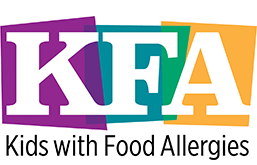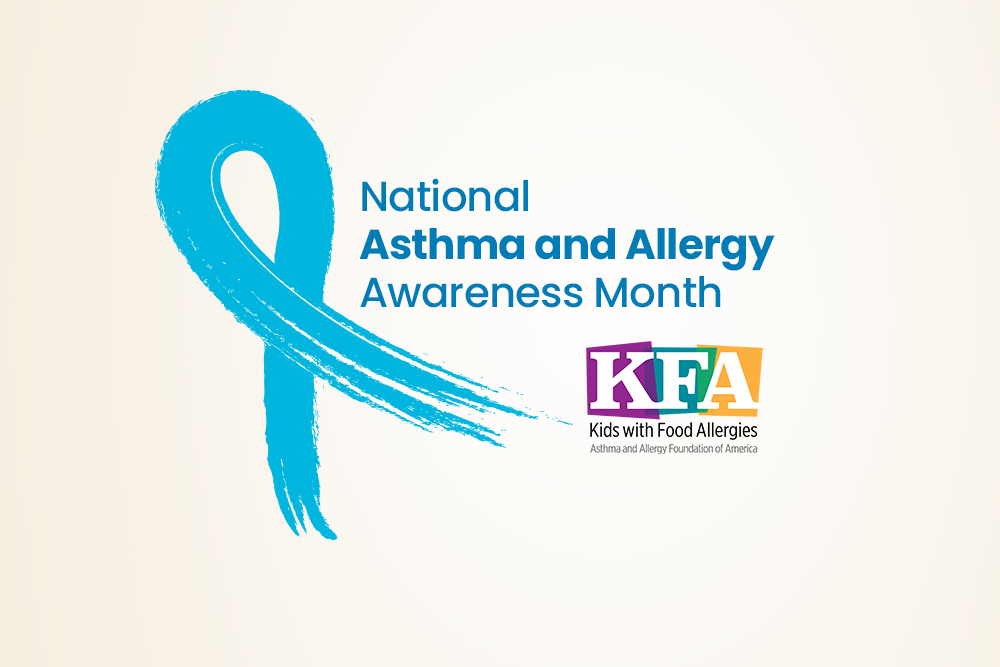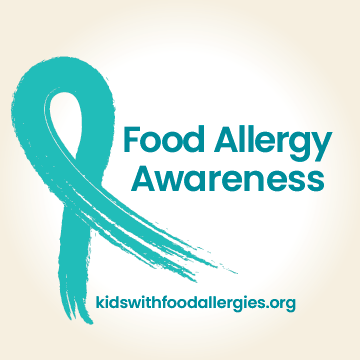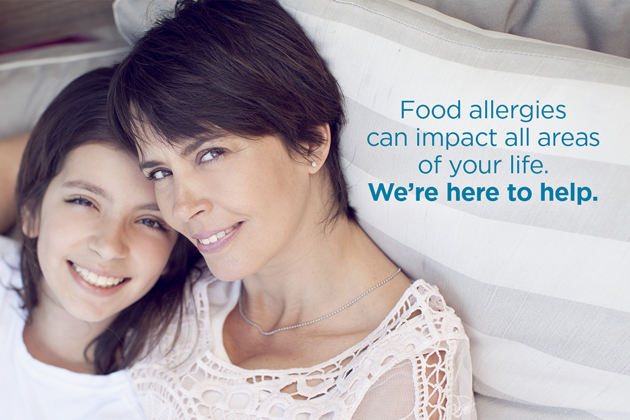Get Involved

Food Allergy Awareness Week and National Asthma and Allergy Awareness Month
The Asthma and Allergy Foundation of America (AAFA) declares May to be “National Asthma and Allergy Awareness Month.” It’s a peak season for people with allergies and asthma and a perfect time to educate patients, family, friends, school staff, coaches, and other people about these diseases.
AAFA’s food allergy division, Kids with Food Allergies (KFA), honors Food Allergy Awareness Week the second full week of May. In 2024, it occurs May 12-18.
Quick Facts (Download Fact Sheet):
- About 20 million people in the U.S. have food allergies (4 million are children).1,2
- Food allergies can develop at any time, but it starts in childhood most often.3
- Any food can cause food allergy. The most common food allergens in the United States are peanuts, tree nuts, milk, eggs, fish, shellfish, wheat, soy, and sesame.3
- Children with food allergies are more likely to have asthma or other allergic diseases.3
- Each year in the U.S., it is estimated that anaphylaxis to food results in 90,000 emergency room visits.4
- Severe allergic reactions to food need prompt treatment with epinephrine.3
- Although new treatments are being developed, there is currently no cure for food allergies.5
Get Involved and Take Action:
This year’s theme is empowering individuals, families, and the community to save and improve lives for people with asthma and allergies. Use our resources and tools to spread awareness during May and all year long
Asthma and Allergy Awareness Month Begins
Since 1984, the Asthma and Allergy Foundation of America (AAFA) has declared May as “National Asthma and Allergy Awareness Month.” It is a peak season for people with asthma and […]
Webinar: Your Food Allergy Questions Answered
More than 20 million American adults and children have food allergies. Chances are you or someone you love has a food allergy. Join us as we answer YOUR questions about […]
References
1. Ng, A.E. & Boersma, P. (2023). NCHS Data Brief, no 460: Diagnosed allergic conditions in adults: United States, 2021. National Center for Health Statistics. https://dx.doi.org/10.15620/cdc:122809
2. Zablotsky, B., Black, L.I., & Akinbami, L.J.(2023). NCHS Data Brief, no 459: Diagnosed allergic conditions in children aged 0-17 years: United States, 2021. National Center for Health Statistics. https://dx.doi.org/10.15620/cdc:123250
3. American College of Allergy, Asthma, & Immunology. (2022). Food Allergy. https://acaai.org/allergies/allergic-conditions/food/
4. Clark, S., Espinola, J., Rudders, S. A., Banerji, A., & Camargo, C. A. (2011). Frequency of US emergency department visits for food-related acute allergic reactions. Journal of Allergy and Clinical Immunology, 127(3), 682–683. https://doi.org/10.1016/j.jaci.2010.10.040
5. U.S. Food & Drug Administration. (2023). Food Allergies.U.S. Department of Health and Human Services. https://www.fda.gov/food/food-labeling-nutrition/food-allergies
Countdown to Food Allergy Awareness Month
Day(s)
:
Hour(s)
:
Minute(s)
:
Second(s)















